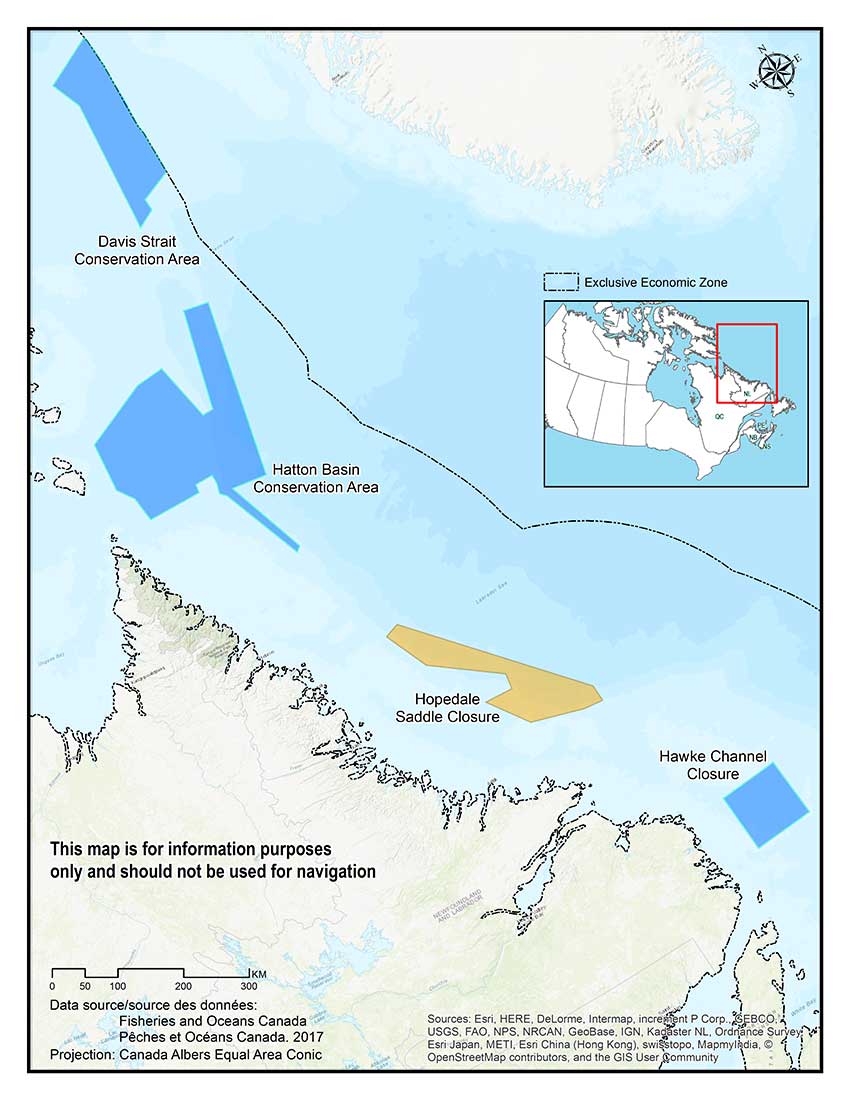Hopedale Saddle Closure
- Location
- Newfoundland-Labrador Shelves Bioregion (Newfoundland and Labrador)
- Approximate Size (km2) contribution to Marine Conservation Targets
- 15,411 km2
- Approximate % coverage contribution to Marine Conservation Targets
- 0.27%
- Conservation Objective
- Protect corals and sponges and contribute to the long-term conservation of biodiversity.
Ecological Components of Interest
Species of regional importance: cold-water corals and sponges
- Why they are important: Corals and sponges are fragile, slow to recover, structure-providing species.
Habitat that is important to biodiversity conservation: corals and sponges
- Why it is important: The high concentrations of these structure-forming species provide habitat for many other species.
Prohibitions
The ecological components of interest are effectively conserved through the following prohibitions:
All bottom-contact fishing activities.
Other Considerations
No human activities that are incompatible with the conservation of the ecological components of interest may occur or be foreseeable within the area.
Environmental Context
Corals and sponges play an important functional role for numerous forms of marine life. They act as spawning and breeding grounds, nurseries, and refuges for many aquatic species. Significant areas of coral and sponge aggregations coincide with areas of higher biodiversity.
The dense aggregations created by large, structure-forming cold-water corals can alter bottom currents and provide niche space for other organisms.
This area also overlaps three Ecologically and Biologically Significant Areas (EBSAs): Outer Shelf Nain Bank, Labrador Slope, and Hopedale Saddle. The area overlaps with 46% of the Outer Shelf Nain Bank EBSA.
The area supports an important overwintering area for the endangered population of Eastern Hudson Bay Beluga, several depleted species, and high biological diversity.
Prohibiting bottom-contact gear can protect not only the corals and sponges but also diverse populations of other species of fish and invertebrates that utilize the structural habitat provided by corals and sponges. This area can act as a natural refuge area that may contribute to increased species productivity, which in turn, could potentially lead to increased abundance within and adjacent to the area.
- Date modified:
